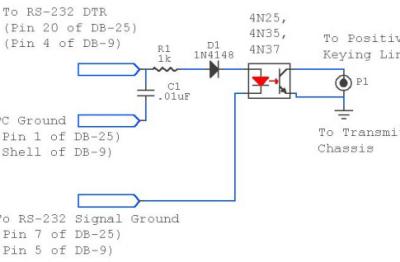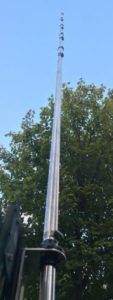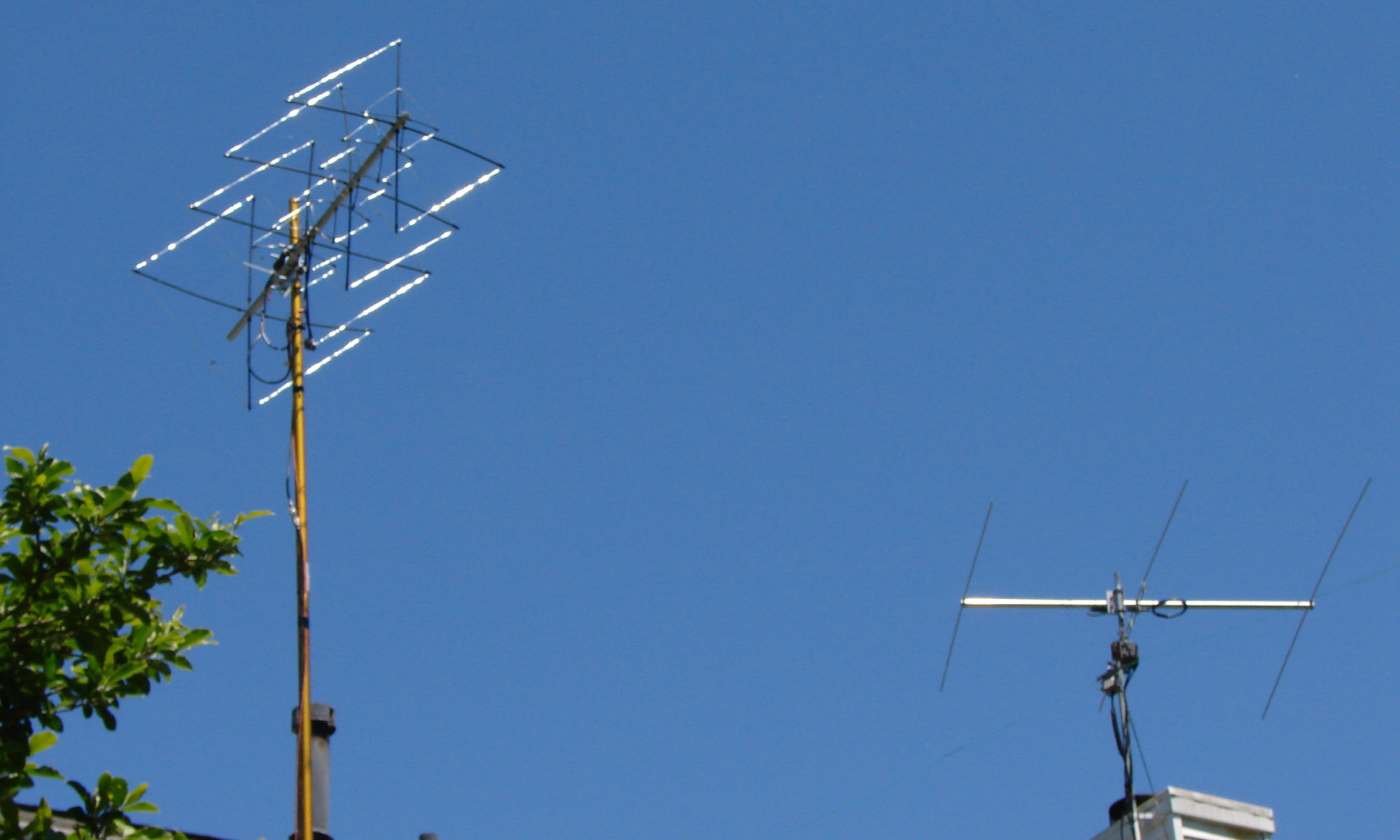A few years ago I built a shielded loop for receiving on 160 meters, but after attending W3LPL’s Contest University session on effective top band antennas, I thought about installing a better receive antenna. The loop does a decent job, with the 15 dB preamp I built to go along with it, but Frank pointed out that a Beverage antenna generally has better gain, directivity, and front/back ratio than a loop. There happens to be some forested land behind and down the block from our house, so I decided to try putting up a Beverage and see how it works. Continue reading “Beverage antenna project”
Grounding and bonding presentation
Thanks to the South Lyon Area Amateur Radio Club for hosting me Sunday, March 11 for a presentation on grounding and bonding for the average ham. You can find links and resources here, or via the menu to the right under Presentations.
Single-point ground plane for antenna lines
I’ve replaced my current system of shack feedline grounding with a single-point ground plane for the antenna lines coming into the station.
Previously, the HF antennas (off-center-fed 80 meter dipole, 6BTV vertical, and 160-meter inverted-L) all terminated in a rotary coax switch. The switch is grounded to the station ground bus that runs along the back of the operating desk, in turn grounded with strap to the ground rods through the basement wall outside. Other antennas, such as the 160-meter receive loop, six meter beam and the VHF-FM antenna in the attic, connect to their respective devices directly.
The new SPGP consists of a heavy piece of aluminum angle stock with feedthrough UHF connectors. Continue reading “Single-point ground plane for antenna lines”
Rig control and keying
 I recently replaced my shack computer, a Dell Optiplex, with a Dell Precision i7 workstation. I generally buy off-lease computers, since they are only a couple years old, well-equipped and reasonably priced, and Linux runs on them just fine.
I recently replaced my shack computer, a Dell Optiplex, with a Dell Precision i7 workstation. I generally buy off-lease computers, since they are only a couple years old, well-equipped and reasonably priced, and Linux runs on them just fine.
For contest logging, I’m slowly working in the N1MM direction (there’s a trick or two to running it well under wine), so I still use a DOS-based logging program that relies on serial and parallel ports for keying and rig control. Continue reading “Rig control and keying”
Hustler 6BTV Vertical Antenna Installation
 I recently finished building and installing a Hustler 6BTV six band vertical antenna that I purchased from DX Engineering at the Dayton Hamvention. This antenna, which covers 10, 15, 20, 30, 40 and 50 kHz of 80 meters, has been a reliable workhorse among amateurs for many years, and is a favorite of DXpedition operators because of its simplicity and ease of construction and installation.
I recently finished building and installing a Hustler 6BTV six band vertical antenna that I purchased from DX Engineering at the Dayton Hamvention. This antenna, which covers 10, 15, 20, 30, 40 and 50 kHz of 80 meters, has been a reliable workhorse among amateurs for many years, and is a favorite of DXpedition operators because of its simplicity and ease of construction and installation.
For temporary installations, it’s possible to put the pieces together, tune, hoist, mount and guy it, and run out a few radials along the ground in less than an hour. For more permanent installations, there are many augmentations that turn it into a versatile and easy-to-maintain antenna.
In addition to the antenna, I also purchased the SO239 feed bracket, the reinforced lower tube, and an Alpha Delta lightning spark gap from DXE. They also offer two kinds of tilt mounts, but both are designed to mount on a single 2 inch pole driven into the ground. My mount consists of two Unistruts anchored in concrete with aluminum panels mounted across them, which was the mounting arrangement for the 30 and 15 meter vertical which the 6BTV replaces. Continue reading “Hustler 6BTV Vertical Antenna Installation”
